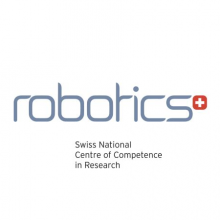
Robohub.org
Exoskeleton with haptic sensors helps paralysed man to kick off World Cup

VIDEO UPDATE 06/13 It’s June 2014 and all eyes are on Brazil. If you’re a football fan then June 12th is the day you’ve been waiting for, but eagle-eyed technophiles are likely to have noticed one very exciting addition to the opening ceremony.
https://www.youtube.com/watch?v=fZrvdODe1QI
Given that the World Cup is a celebration of all things football, it seems only right that this event should showcase some emerging technologies that could help a disabled patient to achieve a dream that so many have – taking the first kick at the World Cup.
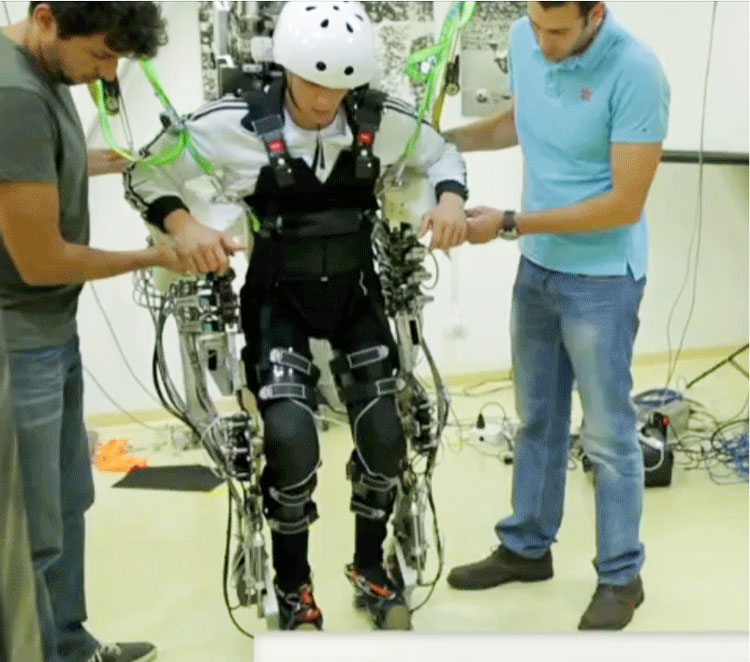
The Walk Again Project is a large collaborative project headed by Prof. Miguel Nicolelis of Duke University and featuring researchers in the USA, Brazil, Germany and Switzerland. It aims to give movement back to a paralysed person by means of an exoskeleton using a wide range of technologies.
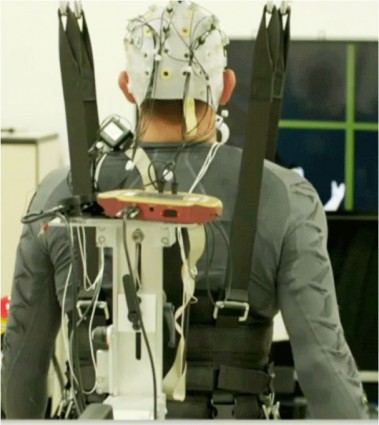
The exoskeleton is controlled through an EEG (Electroencephalography) cap placed over the head – the sensors on the cap read brain activity from the scalp. The cap then deciphers the intention of the user and transmits the instruction to the exoskeleton, which produces the gait movement using a set of hydraulic actuators. While EEG is less sensitive than implanting sensors on the brain, it has the advantage of being non-invasive, meaning that the teenager was not required to undergo surgery for this one-off event.
Despite being made from alloys and polymers to make it as light and flexible as possible, the exoskeleton weighs in at around 60kg.
For someone who is paraplegic, a major issue when using an exoskeleton is that the person is not able to feel their legs and therefore cannot know what position they are in. Think for a second how hard walking would be if you had absolutely no sensation in your legs – even if your muscles were able to do it, the physical stimuli that we all receive and process without active thought would not be there – so the mental struggle that you would feel – along with the lack of haptic feedback that able-bodied people take for granted – would probably stop you from being able to walk effectively.
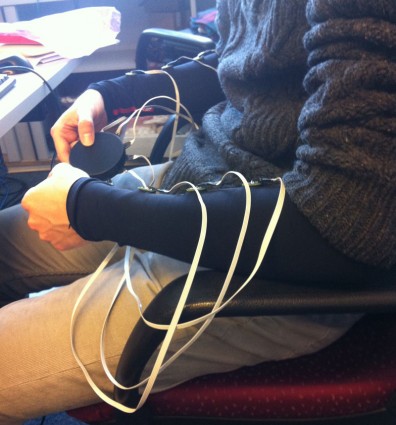
This is where the haptic sleeve system comes in to play. The exoskeleton user wears sleeves created by a team lead by Prof. Hannes Bleuler at LSRO, EPFL and NCCR Robotics and stemming from the ongoing PhD work of Simon Gallo. The sleeves are embedded with vibrators that are spread over the forearm – these vibrators then give a haptic feedback to the wearer as they indicate not only if the foot is on the floor (from sensors on the foot), but which part of the foot is on the floor, giving a proprioceptive effect and allowing the user to walk upright. Thus the wearer can sense what feels like an artificial footprint on their arm as the sensors roll from heel to toe. It is for this part of the technology that the team have spent months training with volunteers, trying out different arrangements of actuators on the arms, trying epsilateral and contralateral arrangements and using virtual reality and an avatar to allow the user to see real time limb positioning.
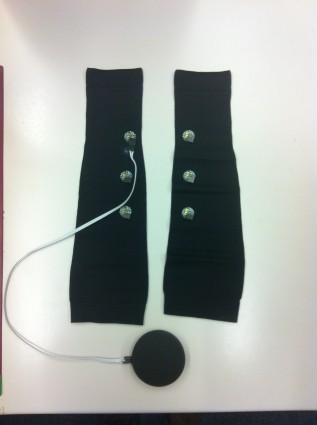
One of the major challenges of the project was the training process for the eight volunteers (males and females), to enable them to master control of an exoskeleton directly with their brain in a stressful environment like a stadium. The hopeful volunteers have trained in a realistic virtual environment mimicking the real stadium while receiving feedback from the tactile sleeves for the past 8 months with the final decision on who would take the kick made only last week.
The second worry for the project was that electromagnetic fields from cell phones carried by people in the stadium would block electronic signals in the exoskeleton – however testing in a comparable stadium showed that this would not be a problem.
The researchers hope that by using such a high profile event as the World Cup, the general public will gain a greater understanding and a greater tolerance of what wearable technologies can do, along with giving those with disabilities a hope for the future.
To keep up to date with NCCR Robotics, please sign up to our monthly infoletter and news bulletins, and follow us on Twitter @NCCRRobotics.
If you liked this article, you may also be interested in:
- A random walk with HAL the friendly Exoskeleton
- Rehab robots, smart prostheses and exoskeletons to reach $1.8 billion by 2020
- Introducing the Cybathlon
- Ekso Bionics goes public for $20.6 million
See all the latest robotics news on Robohub, or sign up for our weekly newsletter.
tags: c-Research-Innovation, cx-Health-Medicine, EPFL, exoskeleton, NCCR
